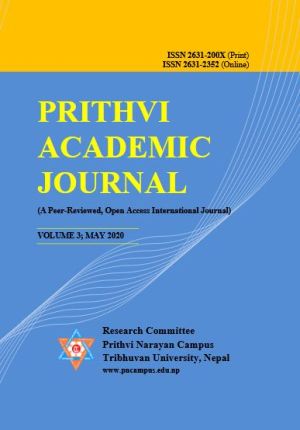Trauma, Testimony and Anticipated Peace in Singh’s “The Silence of Violence”
DOI:
https://doi.org/10.3126/paj.v3i0.29558Keywords:
Conflict, survivor, traumatic experience, trauma theory, violenceAbstract
In the twenty-first century the trauma theory has become an important way to understand a wide variety of contemporary events of exhausting wars and conflicts which have battered the contemporary societies. In the most general sense, it is used to examine the ways in which past painful experiences are processed with the help of literary texts. It further attempts to analyze different ways by which traumatic occurrences are demonstrated, processed, exposed, and expressed throughout a variety of literary and historical texts as a form of testimony. Subsequently, the authors as well as the victims might attempt to negotiate and resolve their own personal traumas with the help of their writings and sometimes with the help of fictional characters in their literary texts as they serve to record and pronounce cultural traumas. In Padhmavati Singh’s “The Silence of Violence” which was written on the pretext of ten years violent conflict that took the lives of thousands of innocent people, one can find the characters and situation inextricably affected by trauma and she or he finds it hugely manipulated to bring out the post-conflict Nepali society apart from anticipating impatiently for long lasting peace and solidarity.




